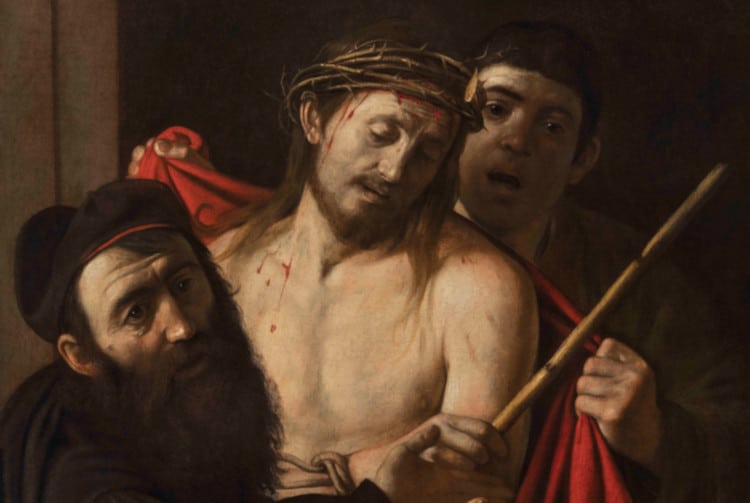
Photo: Prado Museum
In 2021, a painting was close to being auctioned in Spain when the sale was halted by the authorities. With a starting price tag of €1,500 ($1,600), the artwork was attributed to José de Ribera, a pupil of Italian painter Caravaggio. The prestigious Prado Museum alerted the authorities once it suspected the painting may actually be a long-lost creation by the Baroque master himself. Now, its origins have been confirmed, putting an end to one of the biggest mysteries in recent art history.
Titled Ecce Homo, the work of art was created between 1605 and 1609 and measures 44 x 34 inches. Painted with oil on canvas, the piece depicts Caravaggio’s interpretation of the biblical motif of Pontius Pilate presenting Christ to the people, bound and crowned with thorns. The painting is believed to have once been part of the private collection of Phillip IV of Spain, and since it’s one of around only 60 known works by Caravaggio in existence, its value is estimated in the tens of millions of euros.
Before the painting was restored by specialist Andrea Cipriani and his team, tests were carried out to determine the authenticity of the piece. “Four of the most authoritative experts on Caravaggio and Baroque painting, they all share the same passionate certainty: that Ecce Homo is a masterpiece by the Italian artist,” writes the museum. One of the experts, Maria Cristina Terzaghi, even states that speed of consensus around the work being a Caravaggio was unprecedented in the critical history of the painter.
The painting had been in possession of a family in Madrid since the 19th century, and they were allowed to sell it privately earlier this year following an agreement with local officials. Among the conditions imposed to the new owner, whose identity has not been disclosed, is that the painting is not allowed to leave Spain without government permission.
Now, in what the Prado Museum has described as an act of generosity by the painting’s new owner, it has been loaned to the museum for nine months. It will first be unveiled to the public on May 28, 2024 as part of a special one-piece exhibition, on display until October 2024. Then, Caravaggio’s Ecce Homo will be moved to the Prado’s permanent collection for another four months.
“The work is a powerful example of Caravaggio’s mastery of conception: a skillful composition presenting a three-dimensional and dynamic scene that is entirely innovative, yet within the confines of an established iconographic tradition,” concludes the Prado Museum. To stay up to date with any new developments about this finding, visit the Prado Museum’s website.
Prado Museum: Website | Facebook | Instagram
h/t: [AP]
Related Articles:
Tracing the Turbulent Life of Baroque Painter Caravaggio
World’s Only Caravaggio Mural Is Going on Auction for $547 Million
8 Caravaggio Paintings That Broke All the Rules (and Where to See Them)
Intricate Illustrations of the 5 Senses Inspired by Art in the Museo del Prado Museum
